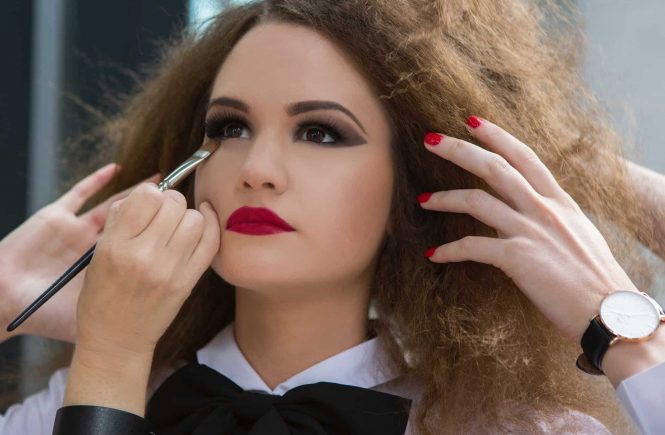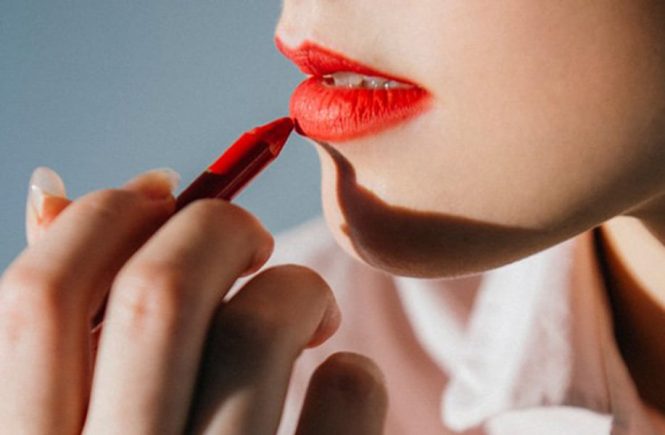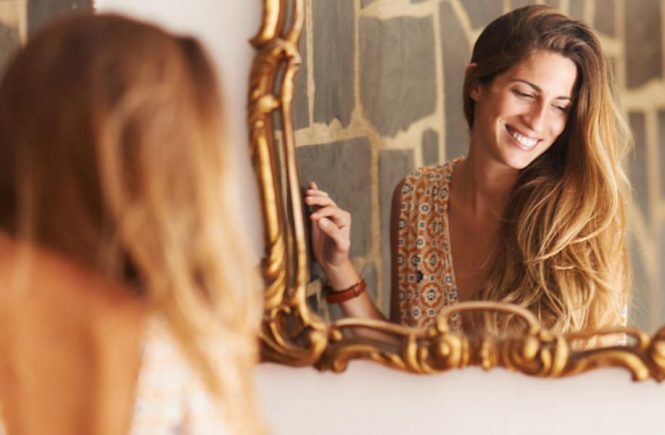Whether you’re a freelance makeup artist or employed by a company as a makeup artist, your portfolio is one of the most important tools that you have to promote your skills and gain new clients.
A makeup artist portfolio is a collection of photos that display your best work – you can then use these photos to market yourself, attract new clients and gain more work. The photos in a makeup artist’s portfolio will usually focus in on the makeup work that the artist has completed on clients… think headshots and close up shots of eyes, lips, noses and skin. However, if a makeup artist has worked in the fashion industry or the theatre, then their portfolio may also include full body shots that showcase their work in the greater context of the production.
It’s important to note that a resume is still needed if you’re applying for jobs… a portfolio is the visual supplementation to showcase your skills.
It’s important to have a makeup artist portfolio because:
- It allows you to showcase various looks and styles. As a makeup artist, each job and each client will be unique so versatility in your skills is crucial! Showing employers that you are well versed is hugely important.
- It’s proof that you know what you’re doing. As with anything artistic, it’s not enough to simply say on paper that you’re a good artist… you must prove it!
- It gives you more control over the direction that your career goes. You can use your portfolio photos to steer your career more towards a specific sort of makeup artistry.
The brutal truth is that the makeup industry can be harshly competitive and people will make snap judgements about you and your artistry in an instant. This is why you need to curate a collection of your most impressive makeup artistry to pass the “one second test”.
If someone can look at your portfolio and instantly know that you’re a professional, you’ve passed the one second test!
There are two primary kinds of makeup artist portfolios:
- Print portfolio. A print portfolio for a makeup artist is a black leather book with clear plastic pages inside that you can insert your photos into. They’re also called “books” as well as portfolios. A print portfolio is a great item to carry around with you when you go to meet clients as they can have the tactile feeling of holding the album whilst reinforcing the creativity in your artistry. A print portfolio is a must to have when you’re meeting in person with a client or a prospective employer! Having a print portfolio on hand shows that you’re serious about your career.
- Online portfolio. You’ll want to make sure you have an online portfolio as well as a print portfolio. Online portfolios for makeup artists are incredibly effective! An online portfolio is essentially your own website where you can showcase your work, list your achievements, write about yourself and your skills and advertise your services. Having an online portfolio is essential for your professionalism! The first place to start is getting your Instagram account up and running, this is a great place to start building your followers and making a name for yourself. Once you have established your social media presence you should start thinking about a website. If you’re worried that making your own website may be difficult, fear not! It’s actually surprisingly easy and if you can set up a Facebook account, you can set up a makeup artist portfolio. Simply choose a template, pop in your photos and info and you’ll be ready to go. You can also customise colours, fonts and logos to suit what you’re looking for (so you can make sure to match your portfolio to any business cards and other marketing materials you may have). Not tech savvy? No problem, there are plenty of great web design companies that will be able to help you create your perfect online portfolio. Here are some fantastic tips on how to choose the right web design agency.
So now that you know that you need a portfolio and the types of portfolios available to you, what makes a great makeup artist portfolio?
Here are our expert tips:
- Make sure your first image is one of your best.
This is the first impression that people will remember, so it should catch the eye and attention of your clients immediately. Use this as an opportunity to show your most creative work, your best technical skill or any other makeup work you’re proud of (for instance, if you applied makeup to a high profile person or for a well known event). - Include proof.
Social proof (a.k.a. testimonials and reviews) has a great psychological impact. It’s proven that people will choose the best product/service/action based on what people around them are doing… so if you want to attract bridal makeup clients, including testimonials from bridal parties you’ve done makeup for will help!Tip: Use your judgement on where and how to use your testimonials. Whilst they might work well for bridal clients, they may be less appropriate for editorial clients. - Leverage authority to your advantage.
If you’ve worked with anyone high profile, at any famous events or with any other noteworthy cause or clients – this should always be included in your portfolio. It reinforces that respected industry people also respect your work, and that’s a powerful endorsement. - Make sure to keep it varied.
You should always include at least one photo of clean makeup, editorial makeup, creative makeup and any other styles of makeup that you have mastered. Also, the higher quality the photographs, the better! You want to make sure to show your work in all its glorious detail so avoid using any photos that are blurry, badly cropped or strangely composed (as this could detract from the overall quality of your work). Keep in mind too, that if you offer multiple styles of makeup (for instance runway makeup and bridal makeup), you may wish to have a portfolio for each – this isn’t uncommon! In that case, you’d have two print portfolios (one for each) and two separate sections in your online portfolio.You’ll also want to make sure to include a reasonable number of images – not too many, but enough to showcase your diversity. A print portfolio usually features anywhere from 10 to 15 images at max, and online you can have as many images as you like. Try to have a logical flow to the images by arranging them in a sequence (e.g. by grouping similar photos together).
Now, if you’re just starting your career as a makeup artist, you may not (yet!) have a large bank of images to choose from, you’ll need to get some photographs of your work sorted. There are a few ways to go about this.
One way to go about this is to set up your own photo shoot – it’s not as difficult as you may first assume! You’ll need a photographer, one or two models and your makeup skills. If you or a friend/family member can use a DSLR camera, that’s a bonus. And many friends will be happy to be a model for your portfolio, it means they’ll get some nice photos of themselves and some great makeup!
Otherwise, if you can afford it, you can also pay for a professional photographer and/or model… this will give you fantastic networking opportunities! Even better, you might wish to team up with an aspiring photographer and you can both build your portfolios at the same time.
You can find photographers and models (if not using family and friends) on Facebook Groups, Gumtree and LinkedIn… you’ll also find them advertising at beauty and hair colleges in your area, so check with your nearest Tafe or University. There are loads of opportunities, you just need to go out and find them! Don’t forget too, a good old fashioned Google search can yield many results.
For models specifically, you can also try reaching out on Model Mayhem where models specifically seek work.
If the first models/photographers that you contact don’t want to work with you or don’t reply, try not to be too disheartened. It’s nothing personal! Rejection is unfortunately a part of any creative industry so you’ll need to develop a thick skin to be a successful makeup artist. Keep reaching out until you find someone who is willing to help you!
When selecting models for your makeup photoshoot, keep in mind:
- Consider what will be appropriate for each model… what sort of makeup will work with their skin tone and features? What sort of model should you select to showcase the style of makeup artistry that you’d like to use?
- Try and aim for diversity – if you can use a couple of models with varying skin tones and features, this will help showcase your versatility as a MUA.
- Ask your photographer about lighting and backdrops… you want to keep your photo backgrounds simple and uncluttered so as not to distract from the makeup.
Above all, remember that building a portfolio is a process. Your portfolio is an evolving body of your work as a makeup artist so as your skills evolve, you’ll want to remove old images that no longer showcase your best potential and replace them with updated images. It’s important to be patient with yourself. You’re new to the industry and your learning, that’s okay! In fact, it’s admirable.
As you get more and more jobs, you’ll have more chances to show off your skills and before you know it, you’ll have an amazing portfolio!




